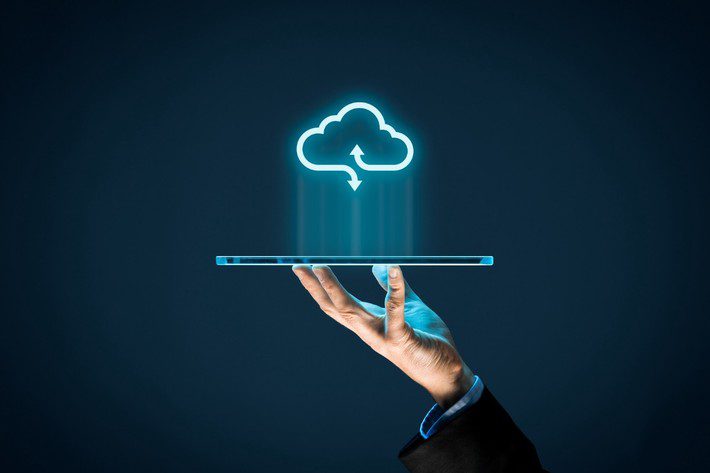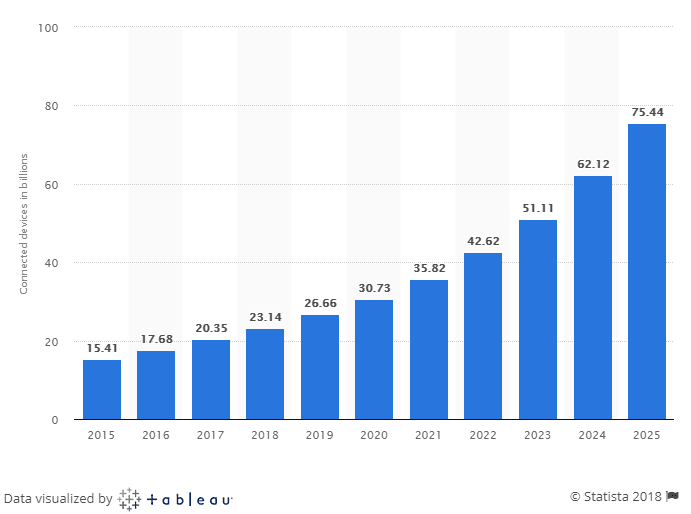
The new era of BigData and advances in technology have made significant transitions towards the high functionality of IoT devices. The popularity of IoT devices has led to more easier methods for BigData collection, analysis, and distribution at a rapid rate. According to a report by Statista, by 2020, there will be 30 billion IoT devices worldwide, with this number set to exceed over 75 billion by 2025, Statistically, also, BigData accumulation over IoT devices and networks is clearly visible and to solve this problem, various computing methods are already popular. There are methods like quantum computing, cloud computing, edge/fog computing.
Though Quantum computing has a bright prospect, it has a long way to go, meanwhile, cloud computing is already a popular analytic method among developers and data scientists. In 2014, a new method, ‘fogging’ was first termed at Cisco. Fogging is better known as edge computing/fog computing. Big data analytics tools like Hadoop helps in reducing the cost of storage. This further increases the efficiency of the business.

BigData and Data Mining:
BigData collected are huge in volumes, they are often collected from a single homogenous source or various heterogeneous sources. These sources are sensors like acoustic sensors, biosensors, Zinc Oxide(ZnO) nanorod sensors, etc. Embedded in these big data are useful information and valuable knowledge.
There are a different variety of data that are collected and analyzed:
- Precise Data
- Unprecise Data
- Uncertain Data
For the collection of theses BIgData, a process called Data Mining is used. Data mining discovers, implicit, previously unknown and useful data. Data mining on BIgData IoT devices helps discover patterns for IoT applications for smart cities and urban analytics. Data mining on social networking helps identify communities. Popular data mining techniques are:
Frequent Pattern Mining :
This technique is used to find sets of frequently occurring items in IoT domains and relationships among them.
Supervised Learning:
This is a method to learn from old BigData IoT data to classify or predict new data.
Big Data analytics is indeed a revolution in the field of Information Technology. The use of Data analytics by the companies is enhancing the technological advancements year by year. The primary focus of the companies is on customers and with a rise in Business to Consumer (B2C) applications. We divide the analytics into different types as per the nature of the environment. We have three divisions of Big Data analytics:
- Prescriptive Analytics
- Predictive Analytics
- Descriptive Analytics
Big Data analytics involves the use of analytics techniques like machine learning, data mining, natural language processing, and statistics. The data is dugout, managed and integrated to provide analysis for the businesses. Large enterprises and multinational organizations use these techniques widely these days in different ways.
What is Fog Computing? and its benefits towards Data Analytics.
Fog Computing is a decentralized infrastructure of BigData, collection, processing, and distribution. It has a considerable processing power of edge nodes, that allows these nodes to perform, the computation of a great amount of data on their own without sending it to distant servers. Fog includes these, ‘Cloudlets’, which are small scale data centers that support intensive IoT applications that require low latency. Fog is an intelligent gateway that offloads clouds enabling more data storage and processing power.
If we consider fog computing for mining of frequent patterns over local devices, the results are far more efficient and have low latency. In this method, local data are kept on individual IoT devices to discover locally frequent patterns. After taking the union of these patterns and forming a global candidate of these patterns, the frequency of each global candidate is calculated on each IoT devices to transmit their frequency to other IoT devices and sum-frequency values to discover globally frequent pattern network.
Mining frequent patterns with fog computing on local IoT devices are more efficient and effective than cloud computing. Pattern mining with fog computing can reduce, latency, low network bandwidth issues, enables geographical focus and increases security.
Benefits of Fog Computing:
- It utilizes the edge network rather than a wide cloud network.
- Facilitates computing close to users.
- It stores, manage and processes data on either IoT devices or networking services located between end
- devices and data centers.
- It has low latency issues.
- It can handle low bandwidth
- Fog computing has multiple interconnected channels.
- It has high data security and safety over data leakages.
- Fog computing provides highly improved user experiences with quick response timing and lower lagging issues.
- It ensures the power efficiency of the devices by using protocols like Bluetooth, Zigbee or Z-wave.
Cloud computing Premise:
Cloud computing is a network of multiple devices, computers, and services connected over the internet. Cloud computing has two major parts:
- Frontend– It is a cluster of client devices like mobiles, computers or tablets.
- Backend– It consists of a data storage and processing system that collects data and processes them.
There are several services under cloud computing like:
- IaaS( Infrastructure as a Service)
- PaaS( Platform as a Service)
- SaaS( Software as a Service)
The integration of cloud computing with IoT devices is cost-effective and flexible to analyze data, also it provides scalability of the device. But, cloud computing has its limitations and that is where fog computing has its advantages over cloud computing,
Fog Vs, Cloud:
It is a popular belief that fog computing may replace cloud computing and it is a myth, as fog computing enhances cloud computing and not replace it. Fog computing is more of a naive approach that can be exploited by node.js developers as they have a better advantage when it comes to native apps based on IoT networks. While cloud computing is not bad either, but the amount of BigData in cloud networks is huge and the same is quite classified/supervised in fog computing.
In Cloud computing, the architecture is centralized and consists of large data centers that can be located around the globe, a thousand miles away from client devices. Fog architecture is distributed and consists of millions of small nodes located as close to client devices as possible.
Cloud computing has a wider network, quite distant from end-devices, while fog acts as a mediator between data centers and hardware, and hence it is closer to end-users. If there is no fog layer, the cloud communicates with devices directly, which is time-consuming.
Fog computing ensures real-time response and control as it is stored in small nodes within proximity of devices, while cloud computing is done on the remote servers.
As the infrastructure of fog computing is smaller than the cloud, it has low storage capabilities and computing power.
The fog has millions of small nodes that are interconnected, which is in contrast to the cloud with fewer nodes.
Fog is high on instant responsiveness but is fruitful only for short-term analysis of data and on the contrary cloud computing provides slow responses with deep long-term analysis.
The fog has low latency due to handling of data over several nodes, while the cloud has to handle BigData over fewer nodes that incur latency.
Protocols like Bluetooth, Zigbee, etc. keeps fog computing alive, even if power lost, while cloud computing is not at all possible without a power source.
Fog is a more secure system as data is stored at small nodes or end-devices, on the other hand, the use of cloud sources for cloud computing makes it insecure for data.
Conclusion:
With more IoT devices reaching each household, today the BigData is increasing in high numbers and to handle such huge data and analyze the same, data analytics is a powerful tool accepted by many firms. But, as there are different computing capabilities to each method, quite different from each other. Every lock has its key and similarly, every BigData center has a different computing approach for it.
The field of Data analytics and computing has huge potential as there are tons of Data mined every hour through various IoT devices all over the world. The education sector is also making use of data analytics in a big way. There are new options for research and analysis using data analytics. Many firms are investing in developing computing capabilities of their own to cope up with huge amounts of BigData and its analytics. Big players like, IBM, Oracle, HP, and SAP are providing computing solutions for BigData and gaining huge profits. Computing has become an ecosystem with players at each level of its infrastructure.
So, if your organization is data-driven or it has an IoT based application, you need to have a computing solution to your data storage as data analytics can help you understand, customer purchase patterns, the potential pool of customers, Market surveys, competitor strategies, and strategic marketing fronts. If your goal is for long-term analysis of data, cloud computing is the best way to go, with cloud source at its core. But, if you are looking at enhanced user experiences and instant real-time responsive, computation needs, go for fogging!
